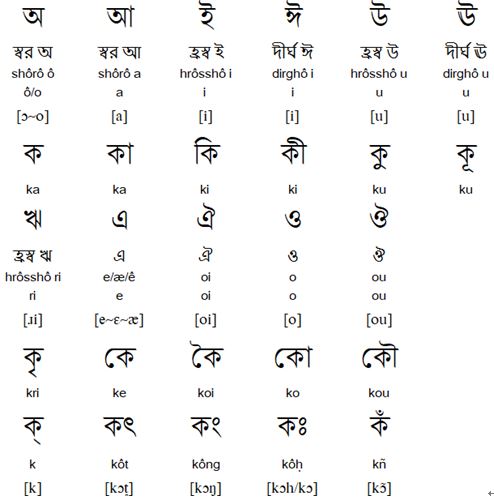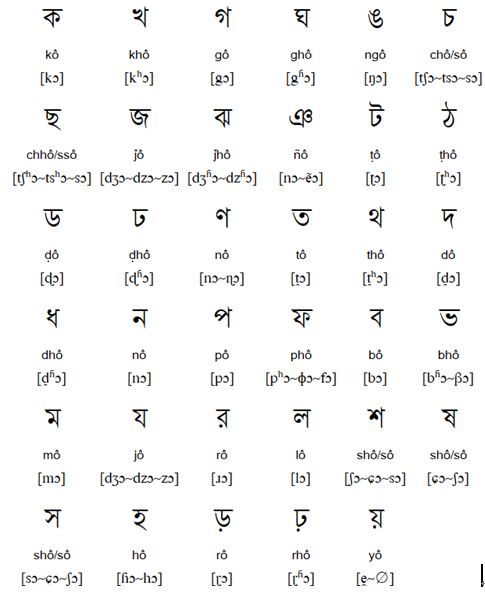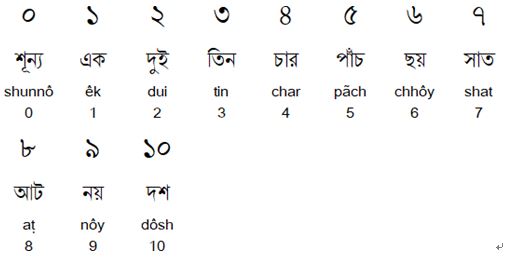Bengali Translation
Bengali translation services, interpreting solutions, and complete localization. Whatever you need to translate to Bangla, our experts work with every language and can handle the terminology you require and we can provide you a fully tailored and cost-effective solution.
Bengali-speaking region in the Indian subcontinent.
Introduction of Bengali
Bengali (/bɛŋˈɡɔːli/), also known by its endonym Bangla (বাংলা Bengali pronunciation: [ˈbaŋla]), is an Indo-Aryan language of the Bengali-Assamese group of languages and the lingua franca of the Bengal region of the Indian subcontinent. It is the most widely spoken language of Bangladesh and the second most widely spoken of the 22 scheduled languages of India, after Hindi. With approximately 228 million native speakers and another 37 million as second language speakers, Bengali is the fifth most-spoken native language and the sixth most spoken language by total number of speakers in the world.
Bengali is the official and national language of Bangladesh, with 98% of Bangladeshis using Bengali as their first language. Within India, Bengali is the official language of the states of West Bengal, Tripura and the Barak Valley region of the state of Assam. It is the most widely spoken language in the Andaman and Nicobar Islands as well in the Bay of Bengal, and is spoken by significant populations in other states including Arunachal Pradesh, Delhi, Chhattisgarh, Jharkhand, Meghalaya, Mizoram, Nagaland and Uttarakhand. Bengali is also spoken by the significant global Bengali diaspora (Bangladeshi diaspora and Indian Bengalis) communities in Pakistan, the United Kingdom, the United States, and the Middle East.
Status
Bangladesh
Bengali is the national language of Bangladesh where it is spoken as a first language by 106 million, and as a second language by 20 million speakers. In India, it statutory provincial language in West Bengal, Tripura, Assam states.
India
Bengali is one of the 23 official languages of India, where it is spoken by 82.5 million people and the second most-spoken language after Hindi–Urdu. It is spoken in West Bengal; Tripura; Jharkhand, Dhanbad, Manbhum, Singhbhum, and Santal Parganas; Odisha, Mayar and Bales; Bihar; Assam, and Goalpara district (Ethnologue). It is a statutory provincial language in West Bengal, Tripura, and Assam. In addition to Bangladesh and India, Bengali is spoken in Nepal, Pakistan, the Middle East, Europe, the U.S., and Canada.
Dialects
Spoken Bengali is best described as a continuum of regional dialects. Some of them are not mutually intelligible. The standard form of Bengali, accepted in Bangladesh and in West Bengal, is based on the West-Central dialect as spoken by educated people in Kolkata (formerly Calcutta) back in the 19th century. Diglossia is widespread, with many speakers being able to use both formal standard Bengali and their own regional dialect. There are two styles of speaking which exist side-by-side: conservative high-style literary language which frequently uses borrowings from Sanskrit, and informal everyday language.
Structure
Sound system
The sound system of Bengali is fairly typical of Indo-Aryan languages.
Vowels
Bengali has 7 oral vowel phonemes, i.e., sounds that differentiate word meaning. The vowels /i/, /a/, and /u/ can be short or long (i:, a:, u:). Vowel length differentiates word meaning. In addition, vowels can be nasalized.
|
|
Front |
Central |
Back |
|
Close |
i, i: |
|
u, u: |
|
Close-mid |
e |
|
o |
|
Open-mid |
|
|
ɔ |
|
Open |
æ |
a |
|
• /æ/ =a in cat
• /ɔ/ = o in bog
Bengali has a wide variety of vowel combinations. Some consist of a vowel + semivowel occurring in one syllable, while others are vowel + vowel combinations occurring across two syllables.

Consonants
Bengali has 29 consonants. There is a contrast between aspirated and unaspirated voiceless and voiced stops. Aspirated consonants are produced with a strong puff of air. There is also a contrast between and apical vs. retroflex stops and affricates. Apical consonants are produced with the tip of the tongue touching the roof of the mouth, whereas retroflex consonants are produced with the tongue curled, so that its underside comes in contact with the roof of the mouth. The use of consonant clusters is extremely limited, even in borrowed words.
Vowels (স্বরবর্ণ) and diacritics:

Stress
Stress in standard Bengali normally falls on the initial syllable of a word. The position of stress alone does not affect word meaning.
Grammar
Bengali is an inflected language, i.e., it uses prefixes and suffixes to mark grammatical relations and to form words. Bengali typically uses postpositions, rather than prepositions. Postpositions require that the noun take a certain case.
Nouns
There are no gender distinctions, but Bengali nouns have the following characteristics:
• Nouns are marked for case: nominative, accusative, genitive, and locative–instrumental.
• There are two numbers: singular and plural. Plural markers are added only to count nouns with animate or definite referents.
• Animacy is marked in the plural.
• Definiteness is marked with post-posited -ţa in the singular, and -gula in the plural for inanimate nouns and –ra for animate nouns, e.g., juta-ţa ‘the shoe‘, juta-gula ‘the shoes’, and chatro-ţa ‘the student’ and chatro-ra ‘the students’.
• Bengali uses classifiers when counting nouns (similar to neighboring South Asian languages), e.g., panch-jon-chatro ‘five-human classifier-students’.
• There are three persons: 1st, 2nd, 3rd. There is no gender distinction in the 3rd person.
• There are three degrees of proximity in the 3rd person (someone who is nearby, someone who is a little further away, and someone who is not present.
Pronouns
• There are three persons: 1st, 2nd, 3rd.
• There is no gender distinction in the 3rd person.
• There are three degrees of proximity in the 3rd person: someone who is nearby, someone who is a little further away, and someone who is not present.
Verbs
Bengali verbs agree with their subjects in person and status category.
• There are three persons (1st, 2nd, 3rd).
• There are three status categories in the 2nd person (despective, ordinary, honorific) and two status categories in the 3rd person (ordinary, honorific).
• Verb stems are derived from verbal monosyllabic or disyllabic verbal bases. Markers are combined to produce different mood/aspect/tense combinations;
• There are three moods: indicative, imperative, conditional.
• Ttwo aspects are distinguished: imperfective and perfective.
• Verbs have three tenses: present, past, future.
• Bengali verbs use a post-verbal negative particle.
Word order
The normal word order in Bengali sentences is Subject-Object-Verb. Adjectives and genitive constructions expressing possession precede nouns.
Vocabulary
Bengali vocabulary is a mixture of native Bengali words, and borrowings from Sanskrit, as well as from neighboring languages such as Hindi, Assamese, Chinese, Burmese, and several indigenous Austroasiatic languages of Bangladesh. A history of invasions from Persia and the Middle East resulted in many borrowings from Turkish, Arabic, and Persian. European colonialism brought borrowings from English, Portuguese, French, and Dutch.
Below are some common words and phrases in Bengali in Latin transcription. ā represents a long /a/.
Hello ei je, nomosker, assalumu alyikum
Goodbye. assi
Thank you. dhonyobad
Please doya kore
Excuse me. māf korben
Yes. ha
No. na
Man purus, manus
Woman nari, mohila
Below are Bengali numerals 0-10 in an Arabic-based and in Bengali scripts

How much does a
translation into Bengali cost?
The standard rate
for translations from English into Bengali is $ 0.11.
For urgent jobs that need several linguists working simultaneously, we will
apply a surcharge.
Just contact us to
get more information and a no-obligation quote. Our project managers can be
reached via telephone, email, or the form. We look forward to serving you.
For more
information about Bengali translation,
call us or add wechat today at +86-18206071482
or send us an email to:info@target-trans.com